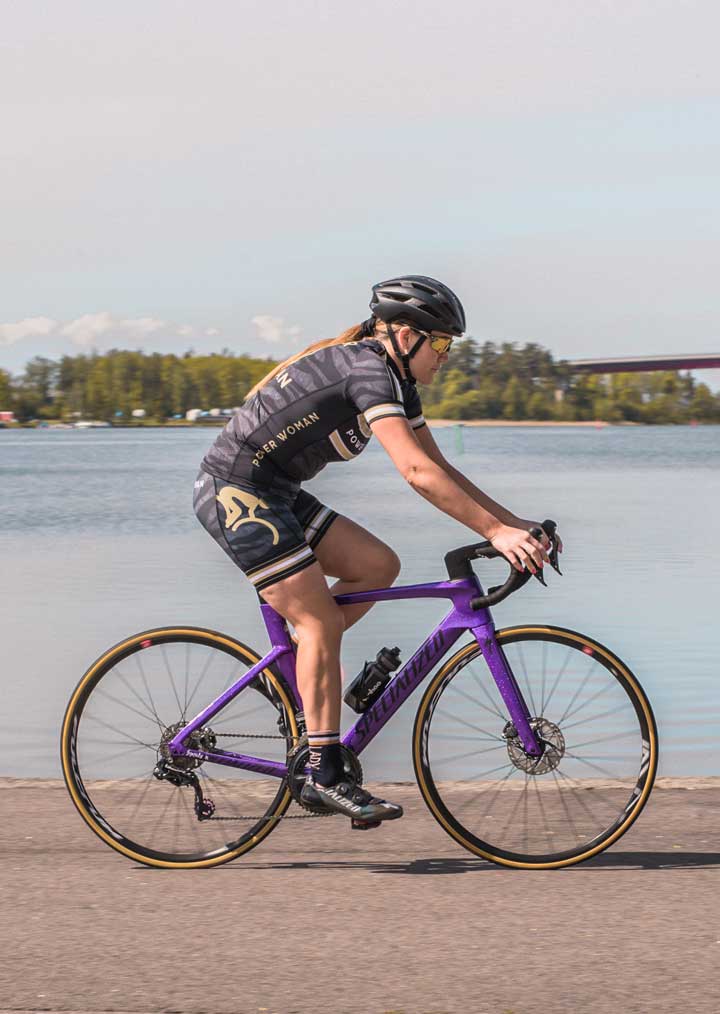Triathlon is a challenging sport that demands precision and endurance, combining swimming, cycling, and running over an extended period while pushing the body to its limits. We have gathered invaluable insights from our vast community to help you conquer the triathlon.

Before the race

Arriving a day before the competition is highly recommended as it allows you ample time to familiarize yourself with the area. Take note of the location of the buoys, the layout of the transition zone, the entrance and exit points, and other relevant details. Being fully prepared will ensure that you are not caught off guard by any unexpected situations. With adequate preparation, you can stay calm and relaxed on race day, knowing that you are well-equipped to handle whatever comes your way.
What to wear

Depending on the location of your competition in the US, the temperature can range from 60 to 110 degrees Fahrenheit, and humidity can be high in some areas. It is important to choose appropriate clothing that will keep you cool and comfortable throughout the race.
The Exchange Zone
Before the competition, it is essential to have a detailed plan for the race. You should know where everything is located, what you need to bring with you, and the order in which you will do things. It's crucial to avoid any surprises on race day.
For your warm-up, start by jogging around a bit, preferably with some speed increases, to get your heart rate up before the start of the race. You can also bring some rubber bands and attach them to a pole to simulate swimming movements and warm up your arms before the swim.
The Swim in a Triathlon Race

At the start of the swim, it can be quite chaotic. If you know that you are not one of the fastest swimmers, it's a good idea to position yourself slightly outside the edge of the starting field. This way, you can conserve your energy for swimming instead of fighting with other competitors. If you need to turn left after the first buoy, it's also wise to position yourself to the right of the field, so that you're not pushed too far to the left. It may require swimming a few extra meters, but it can pay off in the long run. Additionally, be sure to review the course profile beforehand.
How to best go from swimming to cycling

Start planning for the transition during the final 200 meters of the cycling leg so that you enter it with ample preparation. A useful technique is to begin massaging your legs to increase blood flow. As soon as you reach land, you can fold your wetsuit down to your hips, enabling you to run with it on and quickly remove it. Another helpful tip is to apply baby oil to your calves before entering the water, making it easier to take off the wetsuit when it becomes wet.
The cycling part in the triathlon race

Ensure that you have a clear plan for when to consume energy in the form of liquids and gels, and make sure to stick to it throughout the race. Consistently fueling yourself with energy can also prevent mental fatigue and physical exhaustion from setting in too soon, allowing you to maintain focus and push through to the finish line.
Prepare for things that may go wrong
It's important to have a plan for the perfect race, but it's equally important to prepare for things that may go wrong, such as getting a flat tire or dropping a water bottle. It's also crucial to know how to react if you miss an energy station or receive a time penalty. In fact, it's more common for things to not go exactly as planned during a competition. Therefore, it's important to be prepared for all scenarios to ensure a successful race.
Re-fuel
Sports drinks and energy gels are highly recommended as they are easily digestible and don't put too much pressure on the stomach to break them down. It's important to stick with what works for you and avoid trying new things on race day. You'll usually know in advance what type of energy sources will be available, and if you're not accustomed to them, it's important to test them out prior to the competition. However, it's always best to bring your own energy sources to ensure you have exactly what you need.
Transitioning from cycling to running

Transitioning from cycling to running can feel strange as you go from being non-weight bearing to weight bearing. However, you can practice this transition by running a short lap, just 5 minutes is enough, right after cycling.
It's also important to know how to enter the transition zone from the bike stage during the actual race and find your place in the crowded area. It can be difficult to keep track of things when there are 4,000 athletes present. To make it easier for yourself, find landmarks before the competition, such as a tree or a certain advertising sign. During a long competition day, your brain may not be able to process all the exciting impressions, so the more you can simplify things, the better.
Entering the last distance in the triathlon: Running
Take five minutes to "find" your legs and get started. You have a long way to go, especially if it's an Ironman. It's important to have a plan for energy intake, which can help break the race into smaller chunks. If negative thoughts start creeping in, try to focus on your technique. Pay attention to how you land with your feet, relax your shoulders, and other technique-related factors.
Crossing the Finish Line

Crossing the finish line is an incredible feeling, and it's important to celebrate your achievement properly. Be sure to refuel with recovery food that contains salt to counterbalance all the sugar you consumed during the race. Many athletes opt for pizza as a post-race meal.
Recovery
Active recovery is worth its weight in gold, and slowing down on the bike after the race can help reduce soreness the next day. Electrolytes are also crucial, so make sure to drink fluids that contain them. Plain water should be avoided as it can dilute electrolyte levels in the body. Adding a little extra salt to your post-race meals can help restore salt levels more quickly. A light massage is also beneficial to soften the muscles and remove waste products from the body, which speeds up recovery.

Good luck with your preparations and remember - Feel the fear and do it anyway. You are powerful!





